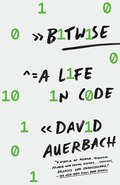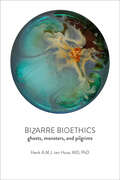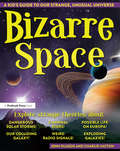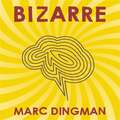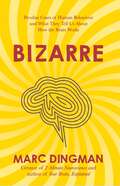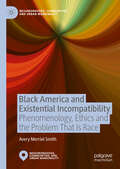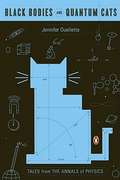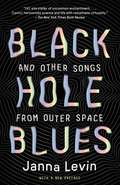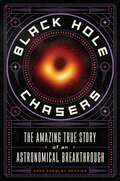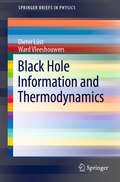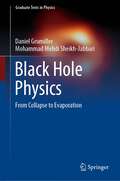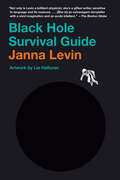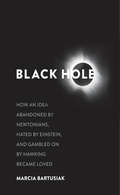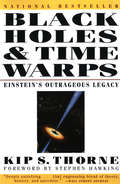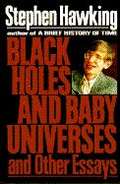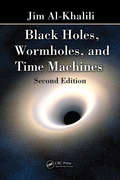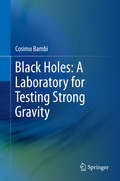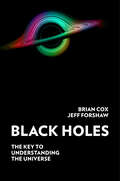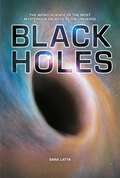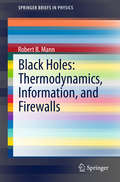- Table View
- List View
Bitwise: A Life in Code
by David AuerbachAn exhilarating, elegant memoir and a significant polemic on how computers and algorithms shape our understanding of the world and of who we are Bitwise is a wondrous ode to the computer languages and codes that captured technologist David Auerbach’s imagination. With a philosopher’s sense of inquiry, Auerbach recounts his childhood spent drawing ferns with the programming language Logo on the Apple IIe, his adventures in early text-based video games, his education as an engineer, and his contributions to instant messaging technology developed for Microsoft and the servers powering Google’s data stores. A lifelong student of the systems that shape our lives—from the psychiatric taxonomy of the Diagnostic and Statistical Manual to how Facebook tracks and profiles its users—Auerbach reflects on how he has experienced the algorithms that taxonomize human speech, knowledge, and behavior and that compel us to do the same. Into this exquisitely crafted, wide-ranging memoir of a life spent with code, Auerbach has woven an eye-opening and searing examination of the inescapable ways in which algorithms have both standardized and coarsened our lives. As we engineer ever more intricate technology to translate our experiences and narrow the gap that divides us from the machine, Auerbach argues, we willingly erase our nuances and our idiosyncrasies—precisely the things that make us human.
Bizarre Bioethics: Ghosts, Monsters, and Pilgrims
by Henk A.M.J. ten HaveThe focus of bioethical debates on exceptional cases neglects the underlying values—like justice and community—that would lend to a broader, more well-rounded understanding of today's world.Discussions of ethical problems in health care too often concentrate on exceptional cases. Bioethical controversies triggered by experimental drugs, gene-edited babies, or life extension are understandably fascinating: they showcase the power of medical science and technology while addressing anxieties concerning health, disease, suffering, and death. However, the focus on rare individual cases in the media spotlight turns attention away from more pressing ethical issues that impact global populations, such as access to health care, safe food and water, and the prevention of emerging infectious diseases. In Bizarre Bioethics, Henk A.M.J. ten Have argues that this focus on bizarre cases leads to bizarre bioethics with a narrow agenda for ethical debate. In other words, although these extreme cases are undeniably real, they present a limited and skewed view of everyday moral reality. This focus also assumes that individuals are rational decision-makers, so that the role of feelings and emotions can be downgraded. Larger questions related to justice, solidarity, community, meaning, and ambiguity are not appreciated. Such questions used to be posed by philosophical and theological traditions, but they have been exorcised and marginalized in the development of bioethics. Science, ten Have writes, is not a value-free endeavor that provides facts and evidence: it is driven by underlying value perspectives that are often based on metaphors and world views from philosophical and theological traditions. Drawing on a rich analysis of the literature, ten Have explains how bioethical discussion can be enriched by these metaphors and develops a broader approach that critically delves into the imaginative world views that determine understanding of the world and human existence. Examining the roles of the metaphors of ghosts, monsters, pilgrims, prophets, and relics, ten Have illustrates how science and medicine are animated by imaginations that fuel the search for hope, salvation, healing, and a predictable future. Bizarre Bioethics invites students, researchers, policymakers and teachers interested in ethics and health care to think about the value perspectives on health and disease today.
Bizarre Space: A Kid's Guide to Our Strange, Unusual Universe
by Jennifer Dlugos Charlie HattonSince ancient times, humans have been puzzled and awed by the strange stars, peculiar planets, and out-of-this-world objects that appear in our sky. Advancements in technology are now giving scientists closer looks and first peeks at the weird and wonderful things that make up our solar system and beyond. From Earth-like moons to strange signals from distant galaxies, Bizarre Space showcases the most shocking space discoveries, proving that what lies beyond our little blue-and-green planet is fascinatingly and often frighteningly bizarre. For example, you might know that Pluto's no longer a planet, but why did it get demoted to float among the other “oddities” of space? What happens to stars when they die? What disaster is just waiting to happen to Mars? And why, exactly, can't Uranus seem to roll straight? Bizarre Space takes you deep into our curious cosmos to discover the mysteries that lie beyond our home planet.Ages 9-12
Bizarre: The Most Peculiar Cases of Human Behavior and What They Tell Us about How the Brain Works
by Marc DingmanBrain science at its most accessible, informative and intriguing.The human brain is an impossibly complex and delicate instrument - capable of extraordinary calculations, abundant creativity and linguistic dexterity. But the brain is not just the most brilliant of evolutionary wonders. It's also one of the most bizarre.This audiobook shows a whole other side of how brains work - from the patient who is afraid to take a shower because she fears her body will slip down the drain to a man who is convinced, against all evidence, that he is a cat, and a woman who compulsively snacks on cigarette ashes.Entertaining though they are, these cases are more than just oddities. In attempting to understand them, neuroscientists have uncovered important details about how the brain works. BIZARRE will examine these details while explaining what neuroscience's most unusual patients have taught us about normal brain function -ideal both for listeners seeking a better appreciation of the inner workings of the brain and those who simply want some extraordinary topics for dinner-party conversation.(P) 2023 Hodder & Stoughton Limited
Bizarre: The Most Peculiar Cases of Human Behavior and What They Tell Us about How the Brain Works
by Marc DingmanThe human brain is an impossibly complex and delicate instrument - capable of extraordinary calculations, abundant creativity and linguistic dexterity. But the brain is not just the most brilliant of evolutionary wonders. It's also one of the most bizarre.This book shows a whole other side of how brains work - from the patient who is afraid to take a shower because she fears her body will slip down the drain to a man who is convinced, against all evidence, that he is a cat, and a woman who compulsively snacks on cigarette ashes.Entertaining though they are, these cases are more than just oddities. In attempting to understand them, neuroscientists have uncovered important details about how the brain works. BIZARRE will examine these details while explaining what neuroscience's most unusual patients have taught us about normal brain function -ideal both for readers seeking a better appreciation of the inner workings of the brain and those who simply want some extraordinary topics for dinner-party conversation.
Black America and Existential Incompatibility: Phenomenology, Ethics and the Problem That Is Race (Neighborhoods, Communities, and Urban Marginality)
by Avery Merriel SmithWithin the context of W.E.B. Du Bois’ question “How does it feel to be a problem?”, this volume examines the “problem” using a phenomenological approach, that is to say, in terms of one’s experience of such. More specifically, the author explores three points: the Black person’s experience of being a problem for White America; her experience of White America as a problem or obstacle for their survival and ability to thrive; and her experience of navigating, negotiating and surviving a world that is presented as a duality. This book deconstructs the world(s) that the Black person experiences by first understanding her as a “Dasein” (the Heideggerian concept of a being that is aware of its being in the world and aware of other beings that are in the world it experiences). In considering the Black person as a Dasein, the author affirms the intrinsic value of her being and, therefore, validates the experience she has of the world in which she finds herself. Finally, this volume incorporates Emmanuel Levinas’ philosophy of the face and Paul Ricoeur’s study of the self to help craft an understanding of the ontology of human relationship to support the advocacy for an ethical encounter between the Black person and those whom she encounters in both the Black world and the White world in which she must navigate and concurrently exist.
Black Bodies and Quantum Cats
by Jennifer OuellettePhysics, once known as "natural philosophy," is the most basic science, explaining the world we live in, from the largest scale down to the very, very, verysmallest, and our understanding of it has changed over many centuries. In Black Bodies and Quantum Cats, science writer Jennifer Ouellette traces key developments in the field, setting descriptions of the fundamentals of physics in their historical context as well as against a broad cultural backdrop. Newton's laws are illustrated via the film Addams Family Values, while Back to the Futuredemonstrates the finer points of special relativity. Poe's "The Purloined Letter" serves to illuminate the mysterious nature of neutrinos, and Jeanette Winterson's novel Gut Symmetriesprovides an elegant metaphorical framework for string theory. An enchanting and edifying read, Black Bodies and Quantum Cats shows that physics is not an arcane field of study but a profoundly human endeavor-and a fundamental part of our everyday world.
Black Hole Blues and Other Songs from Outer Space
by Janna LevinThe authoritative story of the headline-making discovery of gravitational waves—by an eminent theoretical astrophysicist and award-winning writer.From the author of How the Universe Got Its Spots and A Madman Dreams of Turing Machines, the epic story of the scientific campaign to record the soundtrack of our universe. Black holes are dark. That is their essence. When black holes collide, they will do so unilluminated. Yet the black hole collision is an event more powerful than any since the origin of the universe. The profusion of energy will emanate as waves in the shape of spacetime: gravitational waves. No telescope will ever record the event; instead, the only evidence would be the sound of spacetime ringing. In 1916, Einstein predicted the existence of gravitational waves, his top priority after he proposed his theory of curved spacetime. One century later, we are recording the first sounds from space, the soundtrack to accompany astronomy’s silent movie. In Black Hole Blues and Other Songs from Outer Space, Janna Levin recounts the fascinating story of the obsessions, the aspirations, and the trials of the scientists who embarked on an arduous, fifty-year endeavor to capture these elusive waves. An experimental ambition that began as an amusing thought experiment, a mad idea, became the object of fixation for the original architects—Rai Weiss, Kip Thorne, and Ron Drever. Striving to make the ambition a reality, the original three gradually accumulated an international team of hundreds. As this book was written, two massive instruments of remarkably delicate sensitivity were brought to advanced capability. As the book draws to a close, five decades after the experimental ambition began, the team races to intercept a wisp of a sound with two colossal machines, hoping to succeed in time for the centenary of Einstein’s most radical idea. Janna Levin’s absorbing account of the surprises, disappointments, achievements, and risks in this unfolding story offers a portrait of modern science that is unlike anything we’ve seen before.From the Hardcover edition.
Black Hole Blues and Other Songs from Outer Space
by Janna LevinThe authoritative story of the headline-making discovery of gravitational waves--by an eminent theoretical astrophysicist and award-winning writer.From the author of How the Universe Got Its Spots and A Madman Dreams of Turing Machines, the epic story of the scientific campaign to record the soundtrack of our universe. Black holes are dark. That is their essence. When black holes collide, they will do so unilluminated. Yet the black hole collision is an event more powerful than any since the origin of the universe. The profusion of energy will emanate as waves in the shape of spacetime: gravitational waves. No telescope will ever record the event; instead, the only evidence would be the sound of spacetime ringing. In 1916, Einstein predicted the existence of gravitational waves, his top priority after he proposed his theory of curved spacetime. One century later, we are recording the first sounds from space, the soundtrack to accompany astronomy's silent movie. In Black Hole Blues and Other Songs from Outer Space, Janna Levin recounts the fascinating story of the obsessions, the aspirations, and the trials of the scientists who embarked on an arduous, fifty-year endeavor to capture these elusive waves. An experimental ambition that began as an amusing thought experiment, a mad idea, became the object of fixation for the original architects--Rai Weiss, Kip Thorne, and Ron Drever. Striving to make the ambition a reality, the original three gradually accumulated an international team of hundreds. As this book was written, two massive instruments of remarkably delicate sensitivity were brought to advanced capability. As the book draws to a close, five decades after the experimental ambition began, the team races to intercept a wisp of a sound with two colossal machines, hoping to succeed in time for the centenary of Einstein's most radical idea. Janna Levin's absorbing account of the surprises, disappointments, achievements, and risks in this unfolding story offers a portrait of modern science that is unlike anything we've seen before.From the Hardcover edition.
Black Hole Chasers: The Amazing True Story of an Astronomical Breakthrough
by Anna Crowley ReddingIn Black Hole Chasers, award-winning investigative journalist Anna Crowley Redding presents the riveting true story of one of the most inspiring scientific breakthroughs of our lifetime—the Event Horizon Telescope team's reveal of the first image of a super massive black hole.In April 2019, the Event Horizon Telescope Team unveiled the first ever image of a super massive black hole.This inspiring scientific breakthrough took years of hard work, innovative thinking, and a level of global cooperation never seen before. The challenge was immense. The goal was impossible. They would need a telescope as big as the earth itself. The technology simply didn’t exist. And yet, a multi-national team of scientists was able to show the world an image of something previously unseeable.Based off extensive research and hours interviews with many of the team's ground-breaking scientist, physicists, and mathematicians, Black Hole Chasers is a story of unique technological innovation and scientific breakthroughs, but more importantly, it's a story of human curiosity and triumph.
Black Hole Formation and Growth: Saas-Fee Advanced Course 48. Swiss Society for Astrophysics and Astronomy (Saas-Fee Advanced Course #48)
by Andrew King Tiziana Di Matteo Neil J. CornishThe ultimate proofs that black holes exist have been obtained very recently thanks to the detection of gravitational waves from their coalescence and due to material orbiting at a distance of some gravitational radii imaged by optical interferometry or X-ray reverberation mapping. This book provides three comprehensive and up-to-date reviews covering the gravitational wave breakthrough, our understanding of accretion and feedback in supermassive black holes and the relevance of black holes for the Universe since the Big Bang. Neil J. Cornish presents gravitational wave emission from black hole mergers and the physics of detection. Andrew King reviews the physics of accretion on to supermassive black holes and their feedback on host galaxies. Tiziana Di Matteo addresses our understanding of black hole formation at cosmic dawn, the emergence of the first quasars, black hole merging and structure formation. The topics covered by the 48th Saas-Fee Course provide a broad overview of the importance of black holes in modern astrophysics.
Black Hole Information and Thermodynamics (SpringerBriefs in Physics)
by Dieter Lüst Ward VleeshouwersBased on Prof. Lüst's Masters course at the University of Munich, this book begins with a short introduction to general relativity. It then presents black hole solutions, and discusses Penrose diagrams, black hole thermodynamics and entropy, the Unruh effect, Hawking radiation, the black hole information problem, black holes in supergravity and string theory, the black hole microstate counting in string theory, asymptotic symmetries in general relativity, and a particular quantum model for black holes. The book offers an up-to-date summary of all the pertinent questions in this highly active field of physics, and is ideal reading for graduate students and young researchers.
Black Hole Physics: From Collapse to Evaporation (Graduate Texts in Physics)
by Daniel Grumiller Mohammad Mehdi Sheikh-JabbariThis textbook gradually introduces the reader to several topics related to black hole physics with a didactic approach. It starts with the most basic black hole solution, the Schwarzschild metric, and discusses the basic classical properties of black hole solutions as seen by different probes. Then it reviews various theorems about black hole properties as solutions to Einstein gravity coupled to matter fields, conserved charges associated with black holes, and laws of black hole thermodynamics. Next, it elucidates semiclassical and quantum aspects of black holes, which are relevant in ongoing and future research. The book is enriched with many exercises and solutions to assist in the learning.The textbook is designed for physics graduate students who want to start their research career in the field of black holes; postdocs who recently changed their research focus towards black holes and want to get up-to-date on recent and current research topics; advanced researchers intending to teach (or learn) basic and advanced aspects of black hole physics and the associated mathematical tools. Besides general relativity, the reader needs to be familiar with standard undergraduate physics, like thermodynamics, quantum mechanics, and statistical mechanics. Moreover, familiarity with basic quantum field theory in Minkowski space is assumed. The book covers the rest of the needed background material in the main text or the appendices.
Black Hole Survival Guide
by Janna LevinFrom the acclaimed author of Black Hole Blues and Other Songs from Outer Space--an authoritative and accessible guide to the most alluring and challenging phenomena of contemporary science.Through her writing, astrophysicist Janna Levin has focused on making the science she studies not just comprehensible but also, and perhaps more important, intriguing to the nonscientist. In this book, she helps us to understand and find delight in the black hole--perhaps the most opaque theoretical construct ever imagined by physicists--illustrated with original artwork by American painter and photographer Lia Halloran. Levin takes us on an evocative exploration of black holes, provoking us to imagine the visceral experience of a black hole encounter. She reveals the influence of black holes as they populate the universe, sculpt galaxies, and even infuse the whole expanse of reality that we inhabit. Lively, engaging, and utterly unique, Black Hole Survival Guide is not just informative--it is, as well, a wonderful read from first to last.
Black Hole: How an Idea Abandoned by Newtonians, Hated by Einstein, and Gambled on by Hawking Became Loved
by Marcia BartusiakThe award-winning science writer &“packs a lot of learning into a deceptively light and enjoyable read&” exploring the contentious history of the black hole (New Scientist). For more than half a century, physicists and astronomers engaged in heated dispute over the possibility of black holes in the universe. The strange notion of a space-time abyss from which not even light escapes seemed to confound all logic. Now Marcia Bartusiak, author of Einstein&’s Unfinished Symphony and The Day We Found the Universe, recounts the frustrating, exhilarating, and at times humorous battles over one of history&’s most dazzling ideas. Bartusiak shows how the black hole helped revive Einstein&’s greatest achievement, the general theory of relativity, after decades of languishing in obscurity. Not until astronomers discovered such surprising new phenomena as neutron stars and black holes did the once-sedate universe transform into an Einsteinian cosmos, filled with sources of titanic energy that can be understood only in the light of relativity. Black Hole explains how Albert Einstein, Stephen Hawking, and other leading thinkers completely changed the way we see the universe.
Black Holes & Time Warps: Einstein's Outrageous Legacy (Commonwealth Fund Book Program #0)
by Stephen W. Hawking Kip ThorneEver since Albert Einstein's general theory of relativity burst upon the world in 1915 some of the most brilliant minds of our century have sought to decipher the mysteries bequeathed by that theory, a legacy so unthinkable in some respects that even Einstein himself rejected them. Which of these bizarre phenomena, if any, can really exist in our universe? Black holes, down which anything can fall but from which nothing can return; wormholes, short spacewarps connecting regions of the cosmos; singularities, where space and time are so violently warped that time ceases to exist and space becomes a kind of foam; gravitational waves, which carry symphonic accounts of collisions of black holes billions of years ago; and time machines, for traveling backward and forward in time. Kip Thorne, along with fellow theorists Stephen Hawking and Roger Penrose, a cadre of Russians, and earlier scientists such as Oppenheimer, Wheeler and Chandrasekhar, has been in the thick of the quest to secure answers. In this masterfully written and brilliantly informed work of scientific history and explanation, Dr. Thorne, the Feynman Professor of Theoretical Physics at Caltech, leads his readers through an elegant, always human, tapestry of interlocking themes, coming finally to a uniquely informed answer to the great question: what principles control our universe and why do physicists think they know the things they think they know? Stephen Hawking's A Brief History of Time has been one of the greatest best-sellers in publishing history. Anyone who struggled with that book will find here a more slowly paced but equally mind-stretching experience, with the added fascination of a rich historical and human component.
Black Holes and Baby Universes
by Stephen HawkingThese thirteen essays and an extended BBC interview range from the autobiographical to the purely scientific. Hawking discusses imaginary time, black holes, and the Grand Unified Theory.
Black Holes and Baby Universes and Other Essays: And Other Essays (Ulverscroft Large Print Ser.)
by Stephen HawkingNEW YORK TIMES BESTSELLERTHIRTEEN EXTRAORDINARY ESSAYS SHED NEW LIGHT ON THE MYSTERIES OF THE UNIVERSE--AND ON ONE OF THE MOST BRILLIANT THINKERS OF OUR TIME. In his phenomenal bestseller A Brief History of Time, Stephen Hawking literally transformed the way we think about physics, the universe, reality itself. In these thirteen essays and one remarkable extended interview, the man widely regarded as the most brilliant theoretical physicist since Einstein returns to reveal an amazing array of possibilities for understanding our universe.Building on his earlier work, Hawking discusses imaginary time, how black holes can give birth to baby universes, and scientists' efforts to find a complete unified theory that would predict everything in the universe. With his characteristic mastery of language, his sense of humor and commitment to plain speaking, Stephen Hawking invites us to know him better--and to share his passion for the voyage of intellect and imagination that has opened new ways to understanding the very nature of the cosmos.From the Trade Paperback edition.
Black Holes and Warped Spacetime
by William J. KaufmanYOU ARE NEARING A BLACK HOLE. — What was once a massive star, perhaps millions of times bigger than our own sun, has collapsed into oblivion...and is now a hole in the universe. As you fall at almost the speed of light toward the edge, time begins to slow down and soon will cease to exist. The hands on your clock will stop, and so will your heartbeat. Finally, with no possibility of ever turning back, you will disappear from this universe. Astrophysicist William J. Kaufman takes you across our turbulent cosmos to observe the most awesome phenomena ever predicted by modern science. The wonders you will discover--explained in terms you will understand--surpass even the wildest imaginings of science fiction.
Black Holes, Wormholes and Time Machines
by Jim Al-KhaliliBringing the material up to date, Black Holes, Wormholes and Time Machines, Second Edition captures the new ideas and discoveries made in physics since the publication of the best-selling first edition. While retaining the popular format and style of its predecessor, this edition explores the latest developments in high-energy astroparticle physics
Black Holes: A Laboratory for Testing Strong Gravity
by Cosimo BambiThis textbook introduces the current astrophysical observations of black holes, and discusses the leading techniques to study the strong gravity region around these objects with electromagnetic radiation. More importantly, it provides the basic tools for writing an astrophysical code and testing the Kerr paradigm. Astrophysical black holes are an ideal laboratory for testing strong gravity. According to general relativity, the spacetime geometry around these objects should be well described by the Kerr solution. The electromagnetic radiation emitted by the gas in the inner part of the accretion disk can probe the metric of the strong gravity region and test the Kerr black hole hypothesis. With exercises and examples in each chapter, as well as calculations and analytical details in the appendix, the book is especially useful to the beginners or graduate students who are familiar with general relativity while they do not have any background in astronomy or astrophysics.
Black Holes: The Key to Understanding the Universe
by Brian Cox Jeff ForshawBy the star physicist and author of multiple #1 Sunday Times bestsellers, a major and definitive narrative work on black holes and how they can help us understand the universe. At the heart of our galaxy lies a monster so deadly it can bend space, throwing vast jets of radiation millions of light years out into the cosmos. Its kind were the very first inhabitants of the universe, the black holes.Today, across the universe, at the heart of every galaxy, and dotted throughout, mature black holes are creating chaos. And in a quiet part of the universe, the Swift satellite has picked up evidence of a gruesome death caused by one of these dark powers. High energy X-ray flares shooting out from deep within the Draco constellation are thought to be the dying cries of a white dwarf star being ripped apart by the intense tides of a supermassive black hole – heating it to millions of degrees as it is shredded at the event horizon.They have the power to wipe out any of the universe’s other inhabitants, but no one has ever seen a black hole itself die. But 1.8 billion light years away, the LIGO instruments have recently detected something that could be the closest a black hole gets to death. Gravitational waves given off as two enormous black holes merge together. And now scientists think that these gravitational waves could be evidence of two black holes connecting to form a wormhole – a link through space and time. It seems outlandish, but today’s physicists are daring to think the unthinkable – that black holes could connect us to another universe.At their very heart, black holes are also where Einstein’s Theory of General Relativity is stretched in almost unimaginable ways, revealing black holes as the key to our understanding of the fundamentals of our universe and perhaps all other universes.Join Professors Brian Cox and Jeff Forshaw in exploring our universe’s most mysterious inhabitants, how they are formed, why they are essential components of every galaxy, including our own, and what secrets they still hold, waiting to be discovered.
Black Holes: The Reith Lectures (Commonwealth Fund Book Program Ser. #0)
by Stephen HawkingThe legendary physicist explores his favorite subject in a pair of enlightening, accessible, and cleverly illustrated essays for curious readers, originally delivered as BBC lectures. "It is said that fact is sometimes stranger than fiction, and nowhere is that more true than in the case of black holes. Black holes are stranger than anything dreamed up by science-fiction writers, but they are firmly matters of science fact." For decades, Stephen Hawking has been fascinated by black holes. He believes that if we understood the challenges they pose to the very nature of space and time, we could unlock the secrets of the universe. In these conversational pieces, Hawking's sense of wonder is infectious as he holds forth on what we know about black holes, what we still don't know, and theoretical answers to more specific questions, such as: What would happen if you ever got sucked into one? Annotated and with an introduction by BBC News science editor David Shukman, featuring whimsical and illuminating illustrations, Black Holes offers a candid peek into one of the great scientific mysteries of all time. Praise for Stephen Hawking "[Hawking] can explain the complexities of cosmological physics with an engaging combination of clarity and wit. . . . His is a brain of extraordinary power."--The New York Review of Books "Hawking clearly possesses a natural teacher's gifts--easy, good-natured humor and an ability to illustrate highly complex propositions with analogies plucked from daily life."--The New York Times "A high priest of physics, one of a handful of theorists who may be on the verge of reading God's mind."--Los Angeles Times
Black Holes: The Weird Science of the Most Mysterious Objects in the Universe
by Sara LattaIn 2015 two powerful telescopes detected something physicists had been seeking for more than one hundred years—gravitational waves from the collision of two black holes. This announcement thrilled the scientific community. Since the eighteenth century, astronomers have predicted the existence of massive, invisible stars whose gravity would not let anything—even light—escape. In the twenty-first century, sophisticated technologies are bringing us closer to seeing black holes in action. Meet the scientists who first thought of black holes hundreds of years ago, and learn about contemporary astrophysicists whose work is radically shaping how we understand black holes, our universe, and how it originated.
Black Holes: Thermodynamics, Information, And Firewalls (SpringerBriefs in Physics)
by Robert B. MannThis book reflects the resurgence of interest in the quantum properties of black holes, culminating most recently in controversial discussions about firewalls. On the thermodynamic side, it describes how new developments allowed the inclusion of pressure/volume terms in the first law, leading to a new understanding of black holes as chemical systems, experiencing novel phenomena such as triple points and reentrant phase transitions. On the quantum-information side, the reader learns how basic arguments undergirding quantum complementarity have been shown to be flawed; and how this suggests that a black hole may surround itself with a firewall: a violent and chaotic region of highly excited states. In this thorough and pedagogical treatment, Robert Mann traces these new developments from their roots to our present-day understanding, highlighting their relationships and the challenges they present for quantum gravity.
